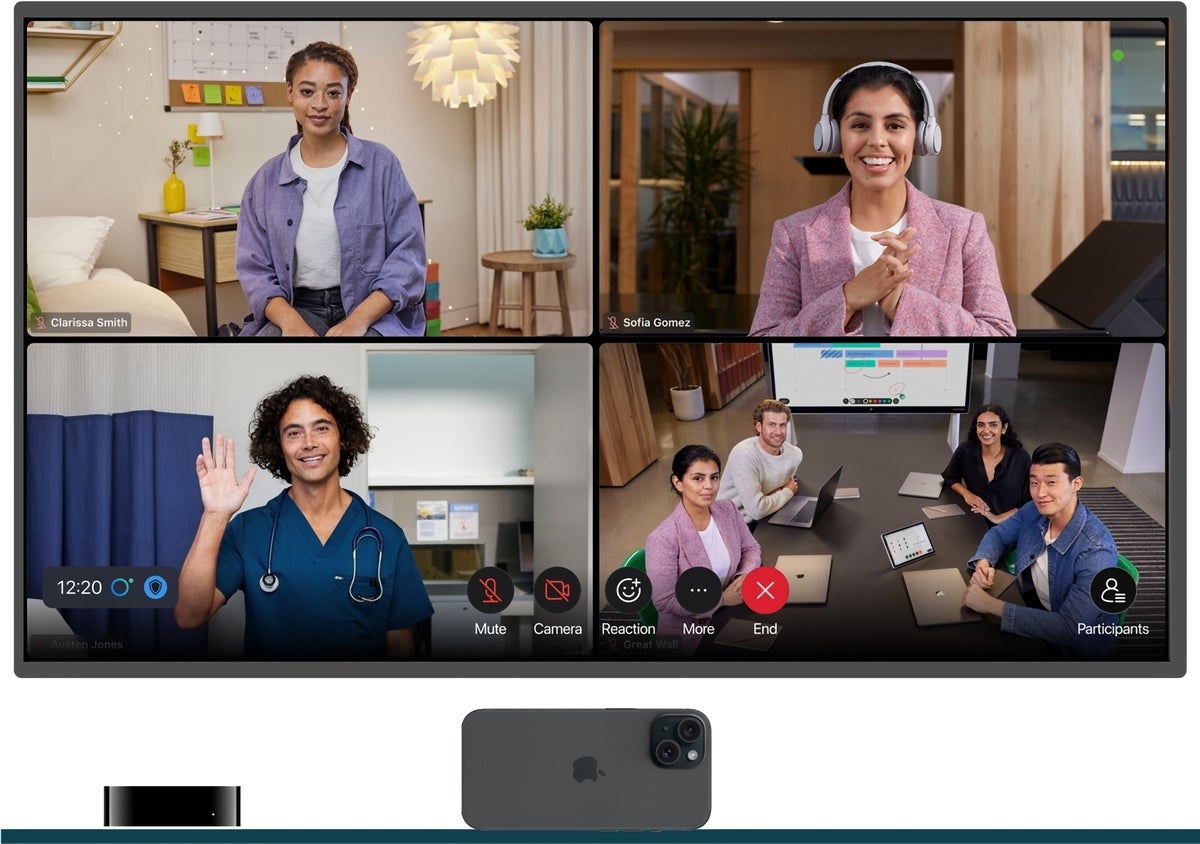Not only is Cisco optimizing its Webex video conferencing platform with AI, but it is also extending it across the Apple ecosystem with support for Apple TV and Apple Watch.
Apple and Cisco began working together in 2015, when they announced plans to optimize Cisco networks for iOS devices and apps and extend Webex support to iPhone and iPad. Two years later, Apple CEO Tim Cook and Cisco CEO Chuck Robbins explained Apple’s thinking concerning enterprise tech:
“People were spending tons of money, but when you looked at the user experience, it wasn’t very good. We thought we could bring Apple ease-of-use to the enterprise and change the way people work.”
What’s new in Webex?
Cisco has delivered on the partnership. Across the last few years, Cisco has introduced Webex for iPad as well as CarPlay and AirPlay support on its own collaboration devices, along with industry-first features for Apple devices, including picture-in-picture and support for DeskView and Continuity Camera.
Webex for iPad now also supports multiple windows and Stage Manager, further securing the tablet’s role as a highly portable tool for mobile pros.
Working where you are
“At Cisco, we’re fully committed to empowering individuals to work on their own terms,” wrote Jeetu Patel, Cisco executive vicepresidnet/general manager for security and collaboration, who has previously said no credible provider of enterprise software can remain outside the Apple ecosystem.
“This means creating intuitive apps that cater to the unique needs of hybrid workers, ensuring they can be productive wherever their work may lead them.”
He stressed that the company is “dedicated to providing effortless collaboration for our customers on Apple products.”
How it works on Apple TV
The Apple TV enhancement is particularly useful, as it transforms Apple’s black box into a potential conference room essential, which in many cases it has already become. To support hybrid conferencing, Cisco has built a Webex app for Apple TV 4K, which it is available for download via the TV App Store.
Webex on Apple TV supports Apple’s recently introduced Continuity Camera technology. In use, that means users can join meetings using the camera and microphone on their iPhone or iPad while seeing other meeting participants on their TV. This should be a good solution for some meetings and might be particularly useful in educational settings, as the deployment costs are relatively low in comparison to off-the-shelf videoconferencing solutions.
(Apple also now offers FaceTime via Apple TV.)
Take a meeting with AirPods and Apple Watch
If you’re a mobile professional, then the Webex app for Apple Watch seems great. When it’s installed, you can both review all your upcoming meetings on the watch display and join them in audio-only mode via the watch and a pair of AirPods.
That’s useful as it means you can engage in a meeting in an incredibly discreet way without reaching for your iPhone while in public spaces.
Webex is also getting smarter
At its Webex One conference, Cisco announced generative AI will come to its application. This will extend to natural language questions, the provision of AI-generated meeting summaries, and AI-boosted audio and visual quality in meetings.
The company also announced a new AI-assisted video/audio codec to enhance meeting quality in the event of network packet loss.
Meeting of makers
Apple continues to develop tools for video collaboration as evidenced by the improvements it continues to make to FaceTime. It also understands that most enterprise collaboration now takes place on Zoom, Webex, or Teams; that’s why we so frequently see enhancements first introduced on FaceTime swiftly make it to third-party collaboration systems.
This fast deployment across the hybrid enterprise likely means we’ll see some amazing enhancements appear across most enterprise collaboration systems when Apple finally ships Vision Pro.
Please follow me on Mastodon, or join me in the AppleHolic’s bar & grill and Apple Discussions groups on MeWe.
Copyright © 2023 IDG Communications, Inc.
This story originally appeared on Computerworld

